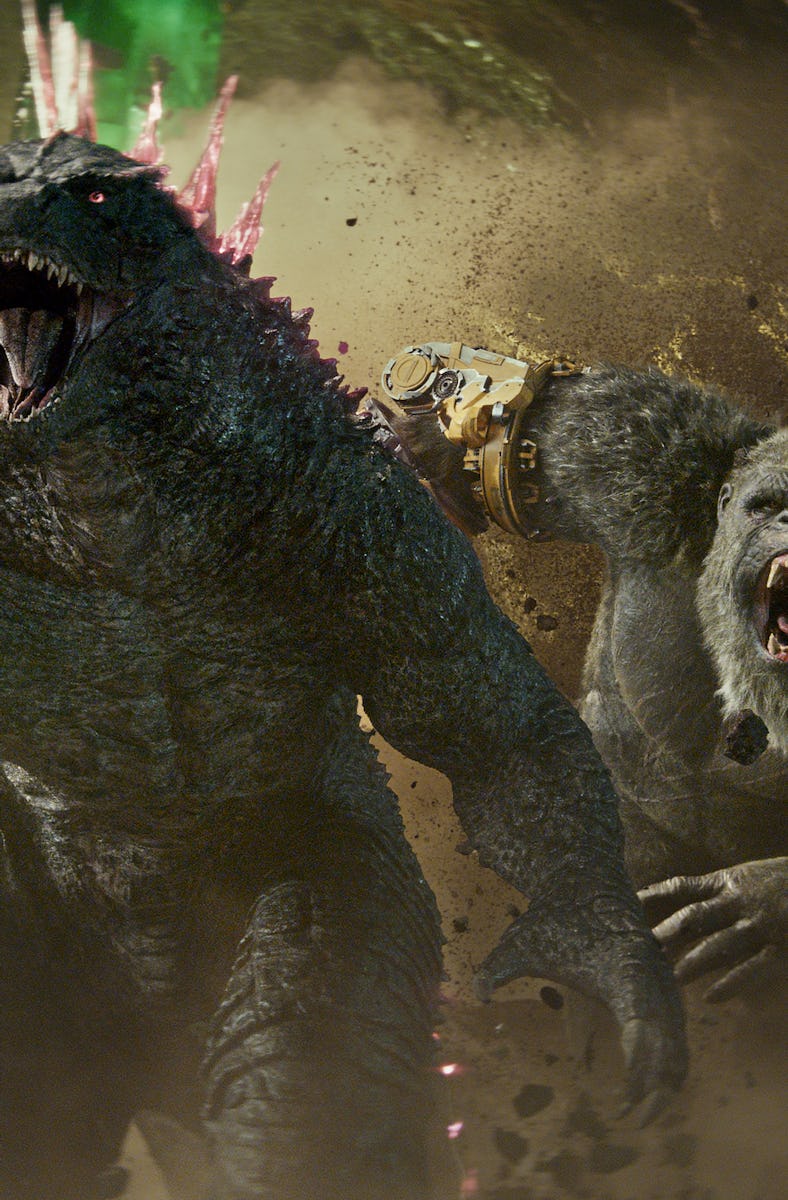Godzilla x Kong Proves the MonsterVerse Has Chosen the Wrong Direction
The MonsterVerse has embraced silliness. That’s fun, but there’s a better path.

It’s been nearly 10 years since director Gareth Edwards’ underrated 2014 blockbuster, Godzilla, launched what is now known as the MonsterVerse, so it’s fitting that the franchise’s fifth installment, Godzilla x Kong: The New Empire, hit theaters this week. Directed by Adam Wingard, the long-awaited follow-up to 2021’s Godzilla vs. Kong is an even bigger and more absurd film than its predecessor, and that’s saying a lot.
While fans’ opinions on The New Empire will vary, it’s worth noting that the film has little in common tonally, aesthetically, and narratively with 2014’s Godzilla. The connections that bind the two films together are so few and far between that one could be forgiven for forgetting they even exist within the same franchise. Both Godzilla x Kong and Godzilla vs. Kong have made it abundantly clear that Edwards’ Godzilla has had little lasting impact on its sequels and spin-offs.
Godzilla x Kong: The New Empire brings two of cinema’s most iconic characters together yet again.
2014’s Godzilla isn’t perfect, but it is consistent in its tone and visual storytelling. It’s emotionally somber and subdued, while Edwards’ direction ensures the scope of the movie’s massive action sequences are never lost on the audience. Its sequel, 2019’s Godzilla: King of the Monsters, tried — though not very successfully — to stick to that framework. That movie is the only MonsterVerse installment that looks and feels even remotely close to the franchise’s first entry.
Both Godzilla vs. Kong and Godzilla x Kong adopt much more ridiculous and cartoonish styles. They’re mindless pieces of popcorn entertainment, and they don’t so much disregard the gargantuan sizes of Godzilla and King Kong as they weaponize them to craft fun but weightless CGI set pieces. Just look at the absurd moment in the Godzilla x Kong trailer when one monster tears off the top half of a skyscraper and throws it at Kong, who proceeds to punch through it with his augmented fist.
The two films couldn’t be more different from Edwards’ Godzilla, which strives to communicate the literal weight of its titan’s movements in a way that still feels unique and considered. The MonsterVerse’s more recent entries, however, have felt far more indebted to the style and tone of 2017’s Kong: Skull Island. That Jordan Vogt-Roberts-directed blockbuster threw out the template set by 2014’s Godzilla in favor of being gonzo, hyperviolent, and frenetic. Set in the early 1970s, it’s a carefree King Kong reboot that cranks the volume all the way up.
The movie is more openly violent than its MonsterVerse predecessor, but it doles out its bloodiest moments with such deranged glee that it never comes close to replicating the darkness of Godzilla. Its number one priority is being as fun as possible, making it a far greater influence on Adam Wingard’s Godzilla and Kong movies than any other contemporary film.
King Kong continues to reign supreme over the MonsterVerse.
In recent years, the MonsterVerse has mined plenty of entertainment by bringing its classic big-screen monsters together. The franchise has made Godzilla and King Kong fight together and against each other, and it’s done so without outright picking a side. But all it takes is one look at the films released before Godzilla x Kong: The New Empire to see which of the franchise’s monsters has actually had the biggest impact on the new blockbuster. Everything may have begun with Godzilla, but the series’ interests are clearly aligned with those expressed in Kong: Skull Island.
That’s disappointing, considering Godzilla is clearly the bigger character right now. Coming off the success of last year’s Godzilla Minus One, audiences seem to be in the mood for big-screen monster movies that take their characters seriously. They won’t get that from Godzilla x Kong, a film that sees the MonsterVerse once again opt for the ridiculousness of Skull Island over the darker ambitions of its increasingly forgotten Godzilla movies.
Godzilla x Kong: The New Empire is playing in theaters.